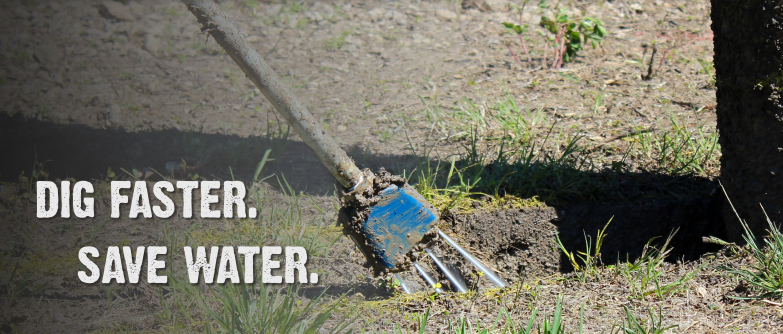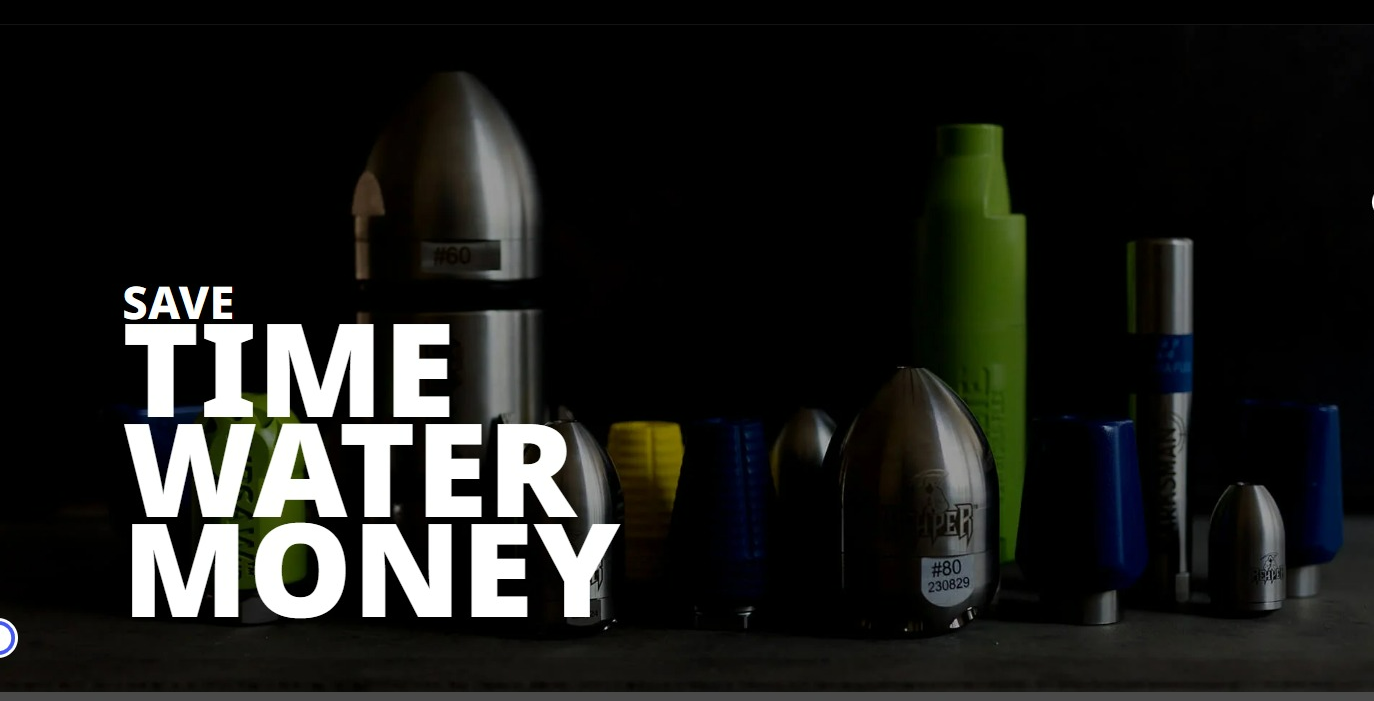Hydro-excavation, a method that utilizes high-pressure water to safely dig and remove soil, is a groundbreaking technique in the construction and excavation industry. However, ensuring the optimal performance of hydro-excavation equipment requires diligent maintenance, especially when it comes to the critical component—the nozzle. Neglecting proper maintenance can lead to a plethora of issues, ranging from reduced efficiency to costly repairs. Let’s examine common maintenance mistakes for hydro-excavation nozzles and their potential consequences, as well as some best practices for regular maintenance. Then, we’ll see how Hydra-Flex, in collaboration with Haaker Underground, is revolutionizing the approach to nozzle maintenance.
Incorrect Nozzle Sizing
When it comes to hydro-excavation, using improperly sized nozzles can have significant consequences. The nozzle size directly impacts the efficiency and effectiveness of the hydro-excavation process, as well as the overall wear and tear on equipment. Using the wrong size can lead to reduced productivity, increased operational costs, and potential damage to the equipment. Using improperly sized nozzles can lead to reduced efficiency, increased operational costs, and potential equipment damage. Factors such as the pump’s flow rate and pressure, the diameter of the hose, and the specific requirements of the excavation project must be considered when choosing the nozzle size. Align it with the equipment’s capabilities for optimal productivity.
Neglecting Nozzle Cleaning and Inspection
Regular cleaning and inspection of hydro-excavation nozzles are imperative to prevent blockages and maintain optimal performance. Neglecting this maintenance task can lead to reduced efficiency, increased downtime, and costly replacements. By adhering to a thorough cleaning and inspection routine, hydro-excavation operators can extend the lifespan of their equipment and ensure smooth, uninterrupted operation. Buildup within nozzles can impede water flow, diminishing cutting power and overall productivity. Implement routine check-ups, thorough evaluations, utilize proper cleaning tools, and flush the system regularly for optimal maintenance.
Improper Nozzle Storage
Improper storage of hydro-excavation nozzles can lead to significant negative consequences such as corrosion, damage, and reduced effectiveness. Improper storage can lead to corrosion, damage, and reduced effectiveness. It’s best to clean and dry nozzles before storage, organize them in a clean space, consider protective cases, avoid moisture, and conduct regular inspections.
Inadequate Nozzle Maintenance Training
Proper training for maintenance personnel is crucial for the effective upkeep of hydro-excavation nozzles. Inadequate or insufficient training can lead to common maintenance mistakes and may result in costly repairs and operational downtime. Comprehensive training ensures that technicians have a thorough understanding of maintenance procedures, the equipment, and potential issues, ultimately contributing to the longevity and efficiency of hydro-excavation equipment. Inadequate training can lead to oversight of critical tasks, improper cleaning, and a lack of understanding of maintenance needs. Provide clear guidelines, hands-on experience, regular updates, and incorporate safety protocols for effective maintenance.

Ignoring Nozzle Wear and Tear Signs
Neglecting visible signs of wear and tear on hydro-excavation nozzles can lead to various detrimental effects. Signs of nozzle wear and tear, such as decreased water pressure, erratic spray patterns, or visible damage, should never be disregarded. Ignoring these signs can result in reduced efficiency, potential equipment failure, and costly repairs. Regular inspections are crucial for identifying wear indicators such as uneven wear patterns, corrosion, or cracks. Immediate action upon identifying signs is necessary to prevent further damage. Options may include cleaning, maintenance, or replacement.
Failure to Replace Worn Nozzles
Maintaining the hydro-excavation nozzles is crucial for the efficient operation of the system. One common mistake that operators make is delaying the replacement of worn nozzles, which can have detrimental effects on the overall performance and longevity of the equipment. Delaying replacement can lead to decreased productivity, inefficient soil removal, and potential damage to underground infrastructure. Vigilance in recognizing signs of wear is crucial. Regular inspections and adherence to manufacturer guidelines are essential.
Incorrect Nozzle Pressure and Flow Rate
Operating hydro-excavation nozzles at incorrect pressure and flow rates can have significant negative impacts on both performance and equipment longevity. When the pressure and flow rates are not set appropriately, it can lead to reduced efficiency and potential damage to the equipment. Maintain appropriate pressure and flow rates for different applications to ensure efficient and safe hydro-excavation processes.
Lack of Proper Nozzle Lubrication
Maintaining proper lubrication for hydro-excavation nozzles is crucial for ensuring smooth operation, preventing corrosion, and extending their lifespan. Without adequate lubrication, the nozzles are susceptible to premature wear and reduced effectiveness. Proper nozzle lubrication also helps in preventing clogging and facilitates the efficient flow of water and debris during excavation operations. Proper lubrication reduces friction, prevents corrosion, and ensures seamless functionality. Choose high-quality lubricants, establish a regular application schedule, ensure thorough cleaning before application, and monitor components for wear.

Ignoring Manufacturer Guidelines
When it comes to maintaining hydro-excavation nozzles, it’s crucial to adhere to the manufacturer’s guidelines. Ignoring these guidelines can lead to suboptimal performance, premature wear and tear, and safety hazards. Deviation can result in nozzle clogging, reduced water pressure, and damage to internal components. Adhering to guidelines ensures peak efficiency, prolonged lifespan, and prevents malfunctions.
Hydra Flex and Haaker Underground
Maintaining hydro-excavation nozzles is crucial for efficient operations and prolonged equipment lifespan. Implementing best practices for nozzle maintenance, including regular inspections, cleaning, and adherence to industry safety guidelines, is essential for successful hydro-excavation projects. By prioritizing proper maintenance, operators can minimize downtime, reduce repair costs, and maximize the productivity of their hydro-excavation equipment.
Hydra-Flex’s high-performance nozzles are designed to enhance productivity during hydro-excavation. These durable nozzles, crafted with the toughest materials, offer customization options and efficient streams, making excavation easier and less fatiguing. Hydra-Flex, driven by a commitment to innovation and reliability, is at the forefront of providing solutions that revolutionize fluid handling products. In collaboration with Haaker Underground, their high-performance nozzles are setting new standards for durability, efficiency, and customization in hydro-excavation. By avoiding common maintenance mistakes and implementing best practices, operators can maximize the lifespan of their equipment, minimize downtime, and optimize the productivity of their hydro-excavation projects. Get started on your high-performance journey today by messaging us or calling at (909) 598-2706.
